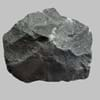Definition
Latite is an igneous, volcanic rock, with aphanitic-aphyric to aphyric-porphyritic texture
Peridotite is a dense, coarse-grained plutonic is the main constituent of the earth's mantle
Origin
Italy
Pike County, U.S
Discoverer
Unknown
Unknown
Etymology
From the Latin word latium
From French, from peridot + -ite
Class
Igneous Rocks
Igneous Rocks
Sub-Class
Durable Rock, Medium Hardness Rock
Durable Rock, Medium Hardness Rock
Other Categories
Fine Grained Rock, Opaque Rock
Coarse Grained Rock, Opaque Rock
Texture
Aphanitic to Porphyritic
Phaneritic
Color
Black, Brown, Colourless, Green, Grey, Pink, White
Dark Greenish - Grey
Durability
Durable
Durable
Scratch Resistant
Yes
Yes
Appearance
Rough
Rough and Shiny
Interior Uses
Decorative Aggregates, Entryways, Interior Decoration
Decorative Aggregates, Interior Decoration
Exterior Uses
As Building Stone, As Facing Stone, Garden Decoration, Office Buildings
As Building Stone, As Facing Stone, Garden Decoration
Other Architectural Uses
Curbing
Curbing
Construction Industry
As a Flux in the Production of Steel and Pig Iron, As a Sintering Agent in Steel Industry to process Iron Ore, As Dimension Stone, Cement Manufacture, for Road Aggregate, Making natural cement, Manufacture of Magnesium and Dolomite Refractories
As Dimension Stone, Cobblestones
Medical Industry
Not Yet Used
Not Yet Used
Antiquity Uses
Artifacts, Monuments, Sculpture
Monuments, Sculpture, Small Figurines
Commercial Uses
An Oil and Gas Reservoir, As a Feed Additive for Livestock, Metallurgical Flux, Soil Conditioner, Source of Magnesia (MgO)
Creating Artwork, Gemstone, Jewelry, Source of Chromite, Platinum, Nickel and Garnet, Source of Diamonds
Types
Rhomb porphyries
Dunite, Wehrlite, Harzburgite, Lherzolite and Pyrolite
Features
Host Rock for Lead
Constitutes upper part of the Earth's mantle, Generally rough to touch, Host rock for Diamond, Is one of the oldest rock
Archaeological Significance
Famous Monuments
Data Not Available
Data Not Available
Famous Sculptures
Data Not Available
Data Not Available
Formation
Latite is a fine-grained, hard rock which is a type of metasomatite, essentially altered basalt. It forms with or without crystallization, either below the surface as intrusive rocks or on the surface as extrusive rocks.
Peridotites can be formed in two ways: as mantle rocks formed during the accretion and differentiation of the Earth or as cumulate rocks formed by precipitation of olivine and pyroxenes from basaltic magmas.
Mineral Content
Alkali feldspar, Biotite, Plagioclase, Pyroxene
Amphibole, Chromite, Garnet, Magnesium, Olivine, Phlogopite, Plagioclase, Pyroxene
Compound Content
CaO, Cl, MgO
Ca, Fe, Mg, Potassium, Silicon Dioxide, Sodium, Titanium Dioxide
Types of Metamorphism
Burial Metamorphism, Cataclastic Metamorphism
Burial Metamorphism, Cataclastic Metamorphism, Contact Metamorphism, Hydrothermal Metamorphism, Impact Metamorphism, Regional Metamorphism
Types of Weathering
Biological Weathering, Chemical Weathering, Mechanical Weathering
Biological Weathering, Chemical Weathering, Mechanical Weathering
Types of Erosion
Chemical Erosion, Water Erosion, Wind Erosion
Chemical Erosion
Grain Size
Fine Grained
Coarse Grained
Fracture
Conchoidal
Irregular
Porosity
Very Less Porous
Less Porous
Luster
Subvitreous to Dull
Shiny
Cleavage
Perfect
Imperfect
Specific Gravity
2.86
3-3.01
Transparency
Translucent
Translucent to Opaque
Density
2.8-2.9 g/cm3
3.1-3.4 g/cm3
Resistance
Heat Resistant, Pressure Resistant
Heat Resistant, Pressure Resistant, Wear Resistant
Deposits in Eastern Continents
Asia
Not Yet Found
China, India, Indonesia, Kazakhstan, Russia, South Korea, Thailand, Turkey
Africa
Not Yet Found
Morocco, South Africa
Europe
Bulgaria
Finland, France, Georgia, Germany, Great Britain, Italy, Kazakhstan, Netherlands, Norway, Spain, Switzerland, Venezuela
Others
Not Yet Found
Not Yet Found
Deposits in Western Continents
North America
USA
Canada, USA
South America
Not Yet Found
Brazil
Deposits in Oceania Continent
Australia
Not Yet Found
New Zealand, Western Australia
Latite vs Peridotite Characteristics
Though some rocks look identical, they have certain characteristics which distinguish them from others. Characteristics of rocks include texture, appearance, color, fracture, streak, hardness etc. Latite vs Peridotite characteristics assist us to distinguish and recognize rocks. Also you can check about Properties of Latite and Properties of Peridotite. Learn more about Latite vs Peridotite in the next section. The interior uses of Latite include Decorative aggregates, Entryways and Interior decoration whereas the interior uses of Peridotite include Decorative aggregates and Interior decoration. Due to some exceptional properties of Latite and Peridotite, they have various applications in construction industry. The uses of Latite in construction industry include As a flux in the production of steel and pig iron, As a sintering agent in steel industry to process iron ore, As dimension stone, Cement manufacture, For road aggregate, Making natural cement, Manufacture of magnesium and dolomite refractories and that of Peridotite include As dimension stone, Cobblestones.
More about Latite and Peridotite
Here you can know more about Latite and Peridotite. The life cycle of a rock consists of formation of rock, composition of rock and transformation of rock. The composition of Latite and Peridotite consists of mineral content and compound content. The mineral content of Latite includes Alkali feldspar, Biotite, Plagioclase, Pyroxene and mineral content of Peridotite includes Amphibole, Chromite, Garnet, Magnesium, Olivine, Phlogopite, Plagioclase, Pyroxene. You can also check out the list of all Igneous Rocks. When we have to compare Latite vs Peridotite, the texture, color and appearance plays an important role in determining the type of rock. Latite is available in black, brown, colourless, green, grey, pink, white colors whereas, Peridotite is available in dark greenish - grey colors. Appearance of Latite is Rough and that of Peridotite is Rough and Shiny. Properties of rock is another aspect for Latite vs Peridotite. The hardness of Latite is 5-5.5 and that of Peridotite is 5.5-6. The types of Latite are Rhomb porphyries whereas types of Peridotite are Dunite, Wehrlite, Harzburgite, Lherzolite and Pyrolite. Streak of rock is the color of powder produced when it is dragged across an unweathered surface. The streak of Latite and Peridotite is white. The specific heat capacity of Latite is 0.92 kJ/Kg K and that of Peridotite is 1.26 kJ/Kg K. Depending on the properties like hardness, toughness, specific heat capacity, porosity etc., rocks are resistant to heat, wear, impact, etc.Latite is heat resistant, pressure resistant whereas Peridotite is heat resistant, pressure resistant, wear resistant.





